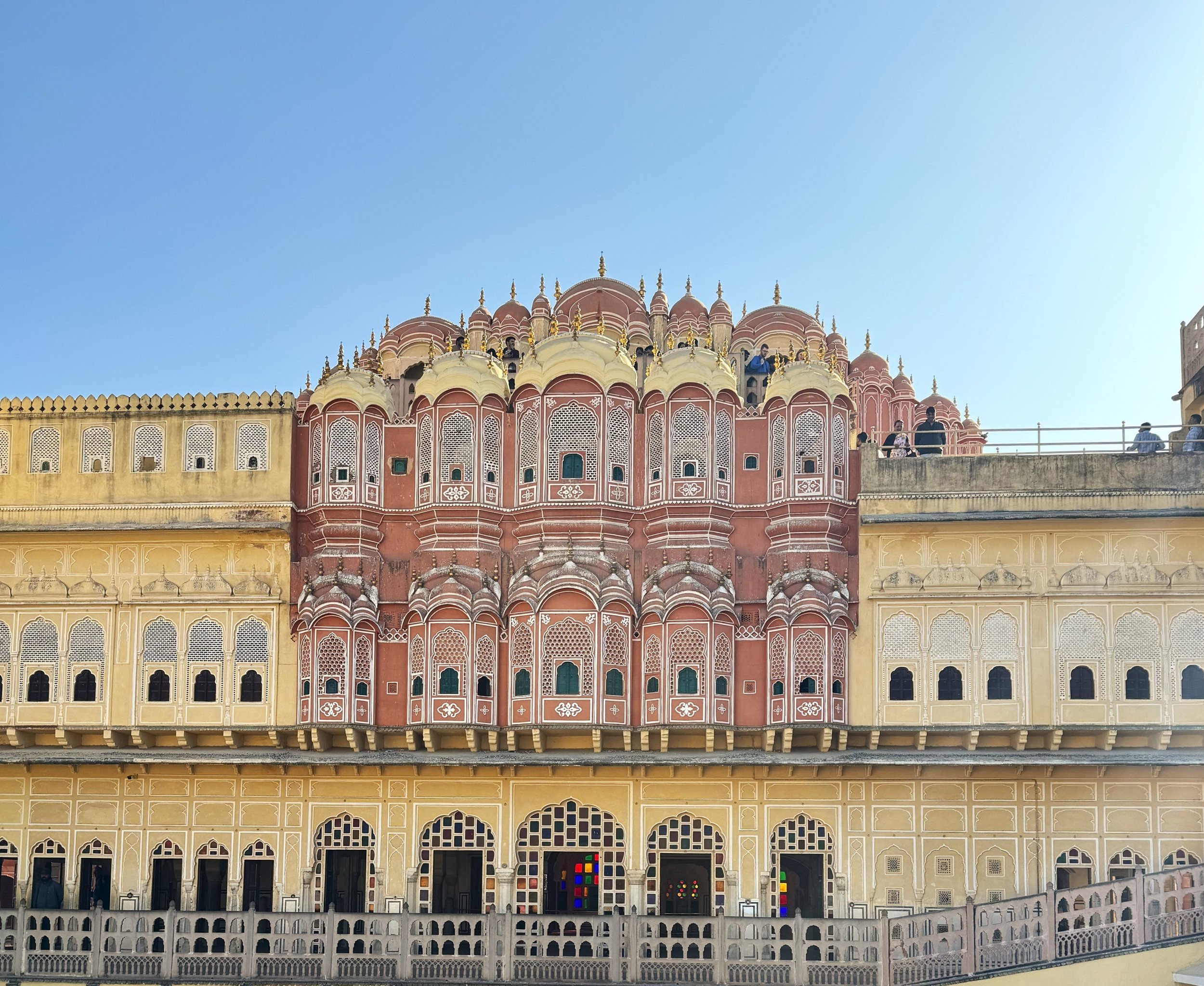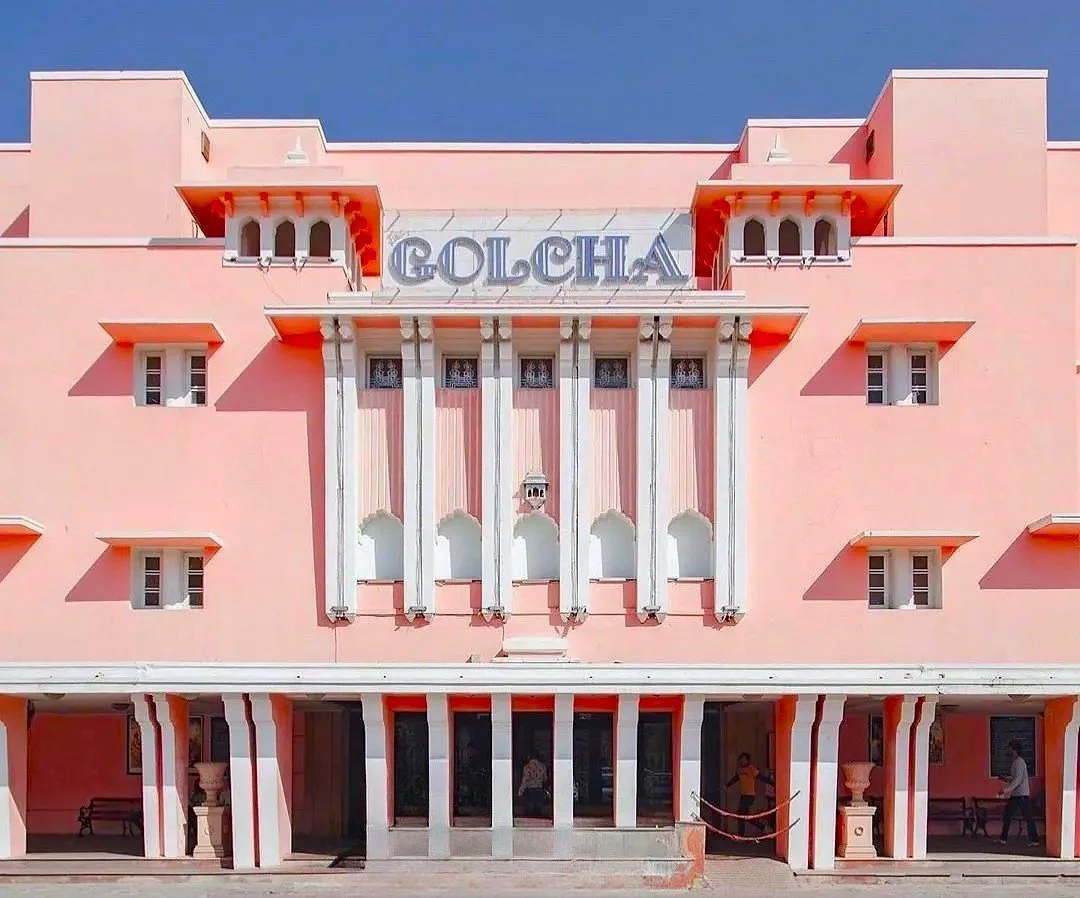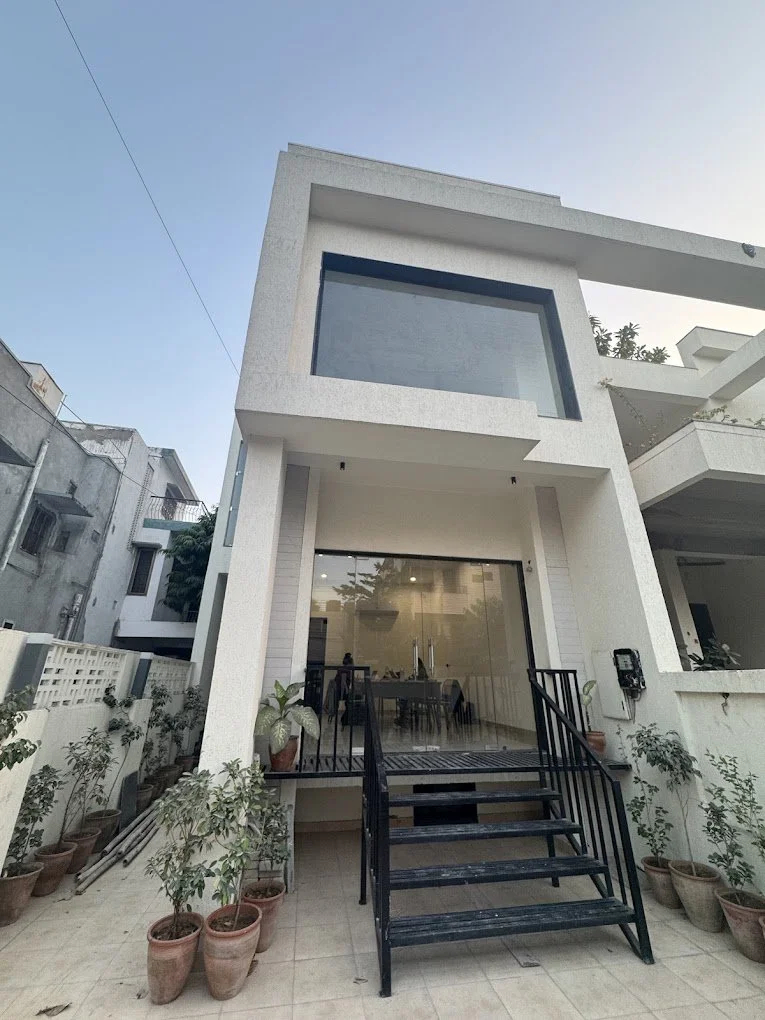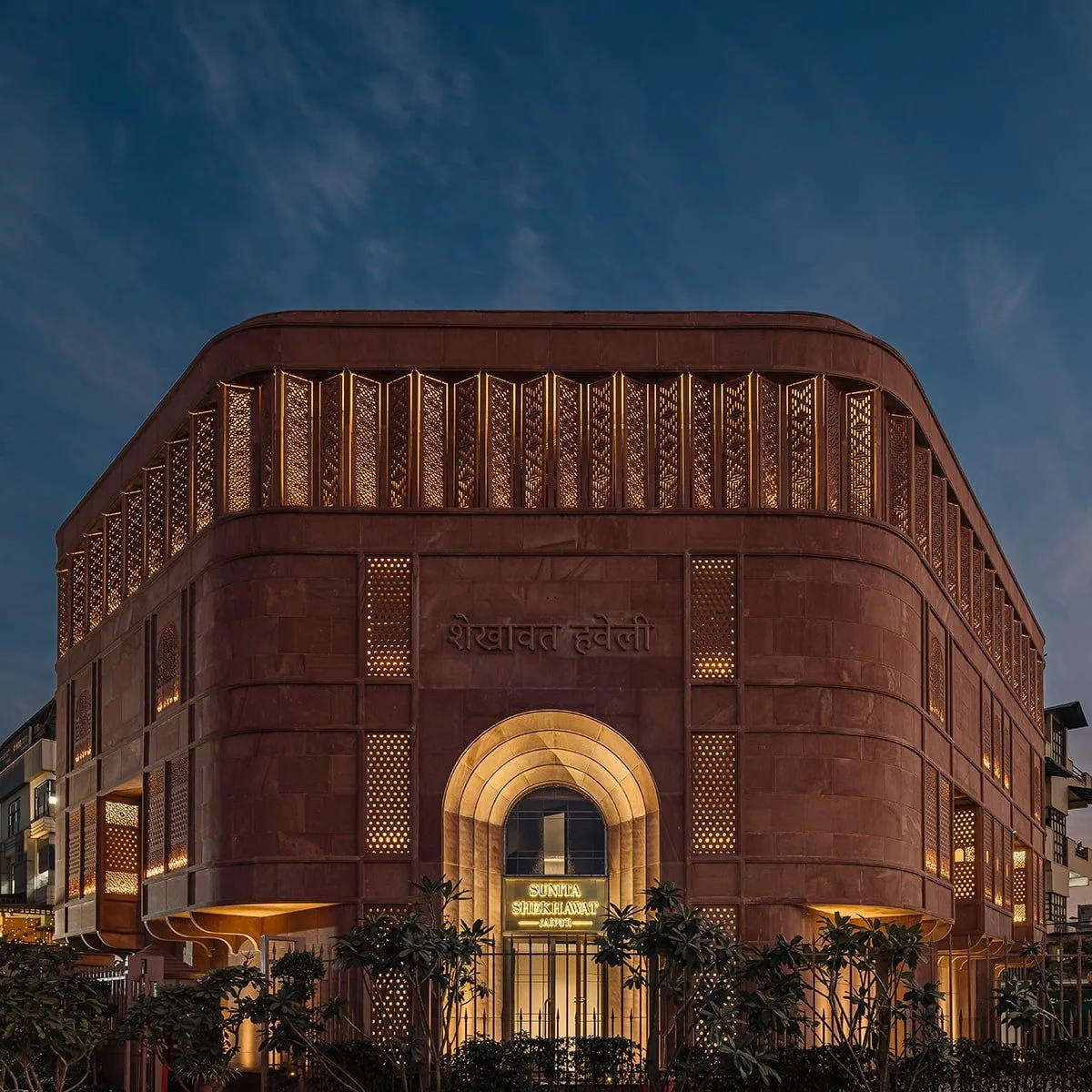VENUES & EXHIBITONS
Albert Hall Museum
Exhibiting Artists: Arezu Zargar, Tinkal Khatri, and Social Design Collaborative
Exploring Jaipur's history and the legacy of the 1883 Jaipur Exhibition, which founded the Albert Hall Museum’s collection, we present three artists whose works connect deeply to the city's narratives and the collaborative spirit of the local community. This echoes the historical significance of Jaipur as a hub for craftsmen and artisans in the late 19th century.
The Albert Hall Museum, Rajasthan’s oldest museum, was established in 1887 and designed by Samuel Swinton Jacob in the Indo-Saracenic style. Originally intended as a town hall by Maharaja Ram Singh, it became a museum under Maharaja Madho Singh II. Its foundation stone, laid during King Edward VII's 1876 visit, marked a transformative moment for the city's cultural identity.
The museum’s collection, including sculptures, pottery, jewelry, and murals, celebrates global artistic influences while preserving Rajasthan's rich cultural heritage.
With special thanks to Archaeological Survey of India, Department of Archaeology & Museums, Government of Rajasthan.
Hawa Mahal
Exhibiting Artist: Monique Romeiko amd Lorenzo Vitturi.
Celebrating the architectural marvel of Hawa Mahal and its significance as a symbol of Jaipur’s cultural identity, this exhibition presents artists whose work reflects themes of observation, visibility, and the interplay of tradition and modernity. These themes resonate with the palace's historical role and intricate design.
Hawa Mahal, or the "Palace of Winds," is a five-story masterpiece built in 1799 by Maharaja Sawai Pratap Singh. Designed by Lal Chand Ustad, it showcases a blend of Rajput and Mughal architectural styles, crafted from red and pink sandstone. The palace's 953 jharokhas (small windows) feature delicate latticework, allowing royal women to observe the bustling streets without being seen, while also enhancing ventilation.
Part of the City Palace complex, Hawa Mahal underwent significant renovation in 2006 and remains a celebrated monument, maintained by the Government of Rajasthan.
With special thanks to Archaeological Survey of India, Department of Archaeology & Museums, Government of Rajasthan.
Golcha Cinema
Exhibiting Artist: Vinayak Mehta
Embracing the retro charm of Golcha Cinema and its legacy as a cultural landmark in Jaipur, this exhibition presents an artist whose work captures the intersection of nostalgia, cinematic storytelling, and urban vibrancy. These elements align with the cinema's enduring significance in the city's artistic landscape.
Opened in 1954 as Prem Prakash Talkies, Golcha Cinema is among Jaipur's oldest operating movie theaters. Founded by the Golcha family, renowned film distributors, it was designed by W.M. Namjoshi. The cinema boasts a striking pink cement façade and a grand marble-and-tile lobby with sweeping staircases, retaining its 1950s retro aesthetic through thoughtful renovations.
Located on Chaura Raasta near the City Palace, Golcha Cinema now features three screens—Tivoli, Chandra Mahal, and Nile—and offers modern amenities like 3D projection, a restaurant, and onsite services. A true blend of history and innovation, it remains a hub for cinematic and cultural experiences.
With special thanks to authorities of Golcha Cinema.
Jal Mahal
Exhibiting Artists: Nishant Ghiya and Nandan Ghiya.
Set against the serene backdrop of Man Sagar Lake, Jal Mahal becomes the inspiration for an exhibition featuring artists whose works delve into themes of nature, restoration, and the fusion of heritage with contemporary art. Their creations echo the palace's enduring legacy and its relationship with the surrounding environment.
Jal Mahal, or the "Water Palace," is an 18th-century architectural gem renovated by Maharaja Jai Singh II. Built with local sandstone, this Rajput-style structure appears to float on the lake, with its submerged lower levels enhancing its mystique. The palace's terrace garden and the scenic Aravalli hills frame its striking beauty.
Extensive restoration efforts in the 2000s revitalized the palace and lake, focusing on ecological balance through desilting, afforestation, and wastewater treatment. While the palace interior remains inaccessible, Jal Mahal continues to captivate visitors as a symbol of Jaipur’s architectural and natural heritage.
With special thanks to Nigar Nigam Heritage, Government of Rajasthan.
Jawahar Kala Kendra (JKK)
A tribute to the timeless spirit of Rajasthani arts and crafts, Jawahar Kala Kendra (JKK) emerges as a dynamic space where tradition meets innovation. This multi-arts center is the backdrop for diverse exhibitions and screenings that reflect the vibrant artistic narratives of Rajasthan and beyond.
Designed by renowned architect Charles Correa and completed in 1992, JKK’s architecture is rooted in Vastu Shastra and inspired by the Navagraha (nine squares) mandala, mirroring Jaipur's city plan. Its eight blocks encompass museums, galleries, theaters, and more. Notable galleries—Sukriti, Surekha, and the Contemporary Gallery—showcase a blend of traditional and modern art.
This year, JKK features exceptional talent across its galleries:
Contemporary Gallery: Valay Gada, Harshit Agrawal, Anshu Kumari Nishchay Thakur, Pallavi Gandhi, Pratap Manna, Rajani Arya, Rajkumar Samal, Prithwish Daw, Rohini Singh, Neha Luthra, and Shubham Sharma.
Sukriti Gallery: Adrian Fernandez, Aninda Singh.
Surekha Gallery: Shilpa Bawane, Mansie Shah, Elinor Euler.
PATI HQ
Exhibiting Artists: Manisha Gera Baswani, in collaboration with Gallery Espace and Erez Navi Pana.
Celebrate the launch of the Public Arts Trust of India HQ with two inaugural exhibitions. In partnership with Gallery Espace, Manisha Gera Baswani presents a survey of works that bridge Asian traditions through painting, photography, and sculpture. Alongside, Erez Nevi Pana showcases Inside Out (2024), a thought-provoking project developed during his Jodhpur residency, exploring the complex relationship between native and invasive species in Rajasthan’s Thar Desert. This intimate evening marks the beginning of a new chapter for PATI.
This inaugural exhibition marks a significant moment for PATI’s Jaipur headquarters, establishing the gallery as a dynamic new platform for dialogue and collaboration between artists, collectors, and the broader community. Through these exhibits, PATI invites visitors to experience how art can transcend boundaries and forge connections across diverse cultural landscapes.
Amrapali Museum
Exhibiting Artist: Natasha Singh
Dedicated to preserving and celebrating the art of Indian jewelry, the Amrapali Museum offers a stunning glimpse into the craftsmanship and elegance that define India’s cultural heritage. Established in 2018 by Rajiv Arora and Rajesh Ajmera, founders of Amrapali Jewels, this 6,500 sq ft museum showcases over 4,000 artifacts, with 800 on display. The collection spans tribal, Mughal, Rajput, and temple jewelry, alongside religious artifacts, textiles, and luxurious objects. Highlights include a silver Jain chariot, deity-worn gold jewelry, and intricate tribal ornaments, each reflecting the diverse artistry of India’s regions and traditions.
The Amrapali Museum explores the interplay of heritage and contemporary design, captivating jewelry enthusiasts and design aficionados worldwide. Drawing inspiration from its extensive collection, it serves as a cultural landmark that preserves the enduring legacy of Indian jewelry while garnering global acclaim.
With special thanks to authorities of Amrapali Museum.
MOMH: Museum of Meenakari Heritage
Exhibiting Artist: Social Design Collaborative, Lorenzo Vitturi, and Group show artists.
The MOMH: Museum of Meenakari Heritage, housed within the elegant House of Sunita Shekhawat, is a sanctuary of Jaipur’s exquisite enamel craftsmanship. This unique venue celebrates the rich legacy of meenakari, a traditional art form that intricately fuses vibrant enamels with precious metals to create timeless jewelry pieces.
Visitors are invited to explore a curated collection that showcases the history, techniques, and evolution of meenakari. The museum reflects Sunita Shekhawat’s passion for preserving and innovating this heritage art, seamlessly blending traditional aesthetics with contemporary design. Each artifact displayed within MOMH embodies the cultural and artistic richness of Rajasthan, offering a deeper understanding of the craftsmanship behind these masterpieces.
Set in a beautifully designed space, MOMH is not only a tribute to the artisans but also a hub for those who cherish heritage, creativity, and the enduring allure of Rajasthan’s meenakari tradition.
With special thanks to the authorities of the House of Sunita Shekhawat.








